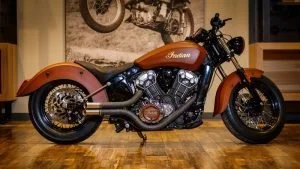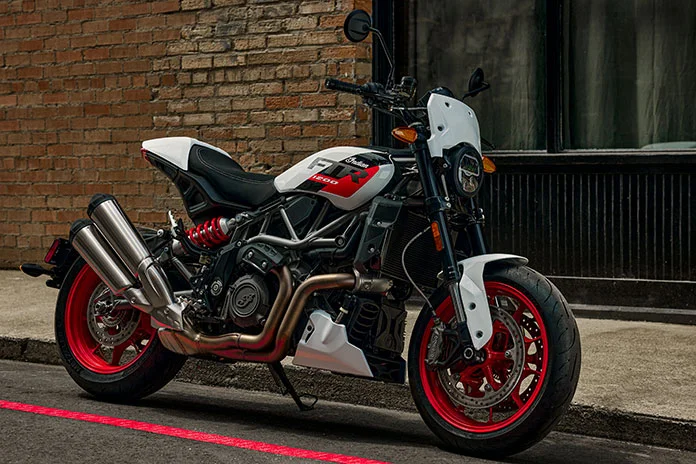Indian Motorcycles global sales are disappointing. In the first half 2025, global sales have been 13.988 (-2.1%) projecting the fourth yearly decline in a string.
McD tracks new vehicles registrations across the World (over 85 countries), reporting data on calendar year. When you wish to compare data reported by us to those declared by the manufacturers, consider they usually report their “sales” (vehicles invoiced), which are usually different from “registrations”, accordingly with their fiscal year split.
Global Sales Trend and Performance
Indian Motorcycles keep struggling. The company, controlled by Polaris, in the last years is under strong attach and although the “traditional” competitor, Harley-Davidson in in free-fall, new competitors are approaching Indian customers, with both low cost companies, like Royal Enfield, and premium companies, Triumph overall, which are gaining terrain in the market segments where Indian success in based.
From the other end, the company is very static and is not evolving an old style strategy, which is clearly no more successful, limiting the product innovation to the introduction of limited editions and special series, on models developed decades ago and with engines heavy, old, low-tech adn no more attractive for young generations.
Probably considered a “cash cow” by the controlling group, Indian is no more providing the high profit return expected and need to be evolved to survived in the next decade market evolution.
Our crude analysis is supported by the evidence of data: following the all-time record hit in the 2021 with sales for the first and only time over the 30.000 units, in the last three years sales declined, ending the 2024 at 25.792.
In the first half 2025, global sales have been 13.988 (-2.1%) projecting the fourth yearly decline in a string.
Most of sales are made in North America, where sales have been positive (+0.5%) in a declining industry. However, sales declined sharply in Asia (China in particular) and in Europe (-5.0%).

Brand Heritage
The “Indian Motocycle Corporation” was founded as the Hendee Manufacturing Company by former bicycle racing champion George M. Hendee in 1897 to manufacture bicycles. The bicycles carried brand names such as Silver King, Silver Queen, and American Indian, which was shortened to simply “Indian” and became Hendee’s primary brand name.
In 1901, George hired Oscar Hedstrom to build gasoline engine-powered bikes to pace bicycle races. The machine he created proved to be powerful and reliable, establishing the company’s reputation for outstanding performance. Later that year the company’s first factory was established in downtown Springfield.
The first Indian Motorcycle was sold to a retail customer in 1902, and later that year an Indian Motorcycle won an endurance race from Boston to New York City in its public racing debut.
The Indian Motorcycle factory team took the first three places in the 1911 Isle of Man Tourist Trophy. During the 1910s, Indian Motorcycle became the largest manufacturer of motorcycles in the world. Indian Motorcycle’s most popular models were the Scout, made from 1920 to 1946, and the Chief, made from 1922 until 1953, when the Indian Motorcycle Manufacturing Company went bankrupt. Various organizations tried to perpetuate the Indian Motorcycle brand name in subsequent years, with limited success.
The company provided the U.S. military with nearly 50,000 motorcycles from 1917-1919, most of them based on the Indian Powerplus model.
In 1920, the company released the first Indian Scout. This fast, reliable, maneuverable bike enticed many people to start riding. This was followed by the Chief (1922), the best-selling Big Chief® (1923), the Prince® (1925), and, following the purchase of Ace Motor Corporation, the Ace® (1927).
In 1923, the company changed its name from The Hendee Manufacturing Company to The Indian Motocycle Company (without “r”).
In the early 1930s the nation’s poor economy depressed motorcycle sales, including those of Indian Motorcycle. Still, the company continued its pursuit of perfection and introduced the 1936 “upside-down” four, which had an exhaust over intake (EOI) design, as well as models featuring instrument panels atop their fuel tanks.
From 1940 until 1945, Indian Motorcycle focused its efforts on contributing to the Allied cause in WWII, at first building motorcycles for the French government and, starting in 1941, producing the Model 841 for the U.S. Army. Very few bikes were built for consumers during this time.
Unfortunately, Indian Motorcycle Manufacturing Company ceased operations and discontinued production of all models in 1953. In 1955, Brockhouse Engineering purchased the rights to the Indian Motorcycle name and sold imported Royal Enfield models branded as Indian Motorcycle models until 1960.
For the following 50 years various entrepreneurs failed on revamping the glorious brand, until the 2011 when Polaris Industries purchased the brand and re-started operations from North Carolina , merging them into their existing facilities in Minnesota and Iowa. Since August 2013, Polaris has marketed multiple modern Indian motorcycles that reflect Indian Motorcycle’s traditional styling.
But so far, Indian Motorcycle is still a good choice for riders. Not only motorcycles, they also provide accessories and clothing, such as jackets and vests. Paired with custom patches, this lets you get a completely biker style from head to toe.


